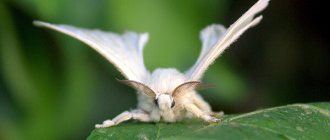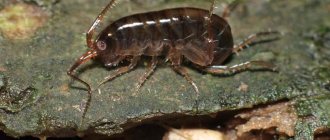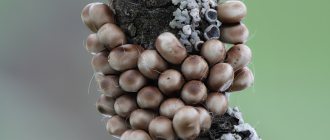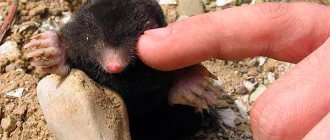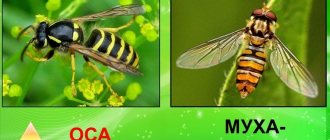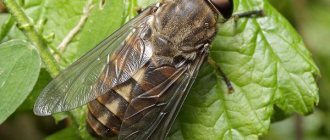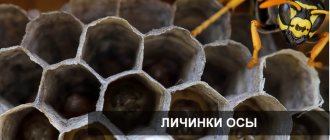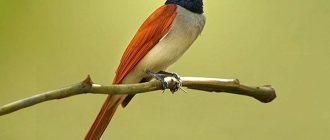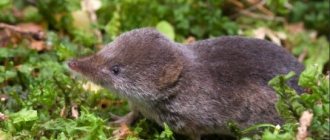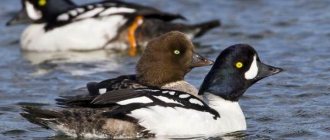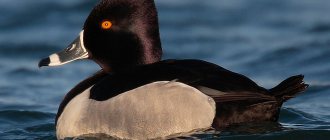- Wild animals
- >>
- Insects
The fashion industry around the world, and any person who prefers clothing made from natural fabrics, are undoubtedly connoisseurs and active consumers of a unique natural product - natural silk. If it weren't for the silkworm , we wouldn't know what silk is. It is impossible to imagine something smoother and more pleasant to the touch and surprisingly comfortable to wear as a ready-made wardrobe item.
Origin of the species and description
Photo: Silkworm
Silk production using silkworms is believed to have existed as early as the Yangshao period (around 5000 BC). Despite the fact that a huge amount of time has passed since then, the basic elements of the production process have not changed to this day. In the international classification, the silkworm is called Bombyx mori (lat.), which literally means “silk death”.
Video: Silkworm
This name is no coincidence. It arose because the main task in silk production is to prevent butterflies from flying out of the cocoon, in order to prevent damage to the silk thread entangling it. For this purpose, pupae are killed inside the cocoons by heating them to high temperatures.
Interesting fact: The dead pupae remaining after unwinding the silk thread are a fairly valuable food product in terms of their nutritional properties.
The silkworm is a butterfly from the family True silkworms. Despite the presence of wings with a span of 40-60 mm, over the long period of development of mulberry production, it has practically forgotten how to fly. Females do not fly at all, and males make short flights during the mating period.
The name eloquently indicates the habitat of these insects - mulberry trees, or mulberries, as they are commonly called in our country. The dark, sweet and juicy fruits of mulberries, similar to blackberries, are to the taste of many, but it is the leaves of these trees that are eaten by the silkworm. The larvae eat them in huge quantities, and do this around the clock, without interruption even at night. If you are nearby, you can hear the rather loud characteristic sound of this process.
After pupating, the silkworm caterpillars begin to weave a cocoon consisting of a continuous, very thin silk thread. It can be white, or it can have different shades - pink, yellow and even greenish. But in modern mulberry production, it is white cocoons that are considered valuable, so only breeds that produce white silk thread are used for breeding.
Interesting fact: Since natural silk thread is a protein product, it can dissolve under the influence of aggressive chemical detergents. This fact must be taken into account when caring for products made from natural silk.
How is silk obtained?
The main goal in silk production is to obtain the same silk thread that the caterpillar produces to create a cocoon. 8–10 days after pupation, the cocoons are heated with hot air (about +90⁰С). The pupa inside dies. The cocoons are sorted by color and size, then washed in hot and cold water to dissolve the adhesive holding the threads together.
How is silk made?
Next, the process of unwinding the cocoon begins. Since the threads are very thin, they are connected in 3 to 10 pieces. The resulting fiber is wound into yarn, and then the raw material is sent to weaving mills, where silk is produced from it.
By the way, the dead pupae remaining after unwinding the cocoons are considered a very valuable nutritious dish.
Appearance and features
Photo: Silkworm butterfly
Externally, the silkworm is rather inconspicuous; an adult individual looks like an ordinary moth or a large moth. It has large wings of gray or off-white color with clearly “drawn” dark veins. The body of the silkworm is quite massive, completely covered with a dense layer of light fibers and visually divided into transverse segments. There is a pair of long antennae on the head, similar to two combs.
If we talk about the life cycle of the silkworm, it is necessary to distinguish between wild insects and domesticated breeds. In captivity, the silkworm does not survive to the butterfly stage and dies in the cocoon.
Its wild counterparts manage to live through all four stages characteristic of insects of any species:
- egg;
- caterpillar (silkworm);
- chrysalis;
- butterfly.
The larva that emerges from the egg is very small, only about three millimeters long. But as soon as it begins to eat the leaves of the mulberry tree, doing this continuously day and night, it gradually increases in size. In just a few days of its life, the larva manages to survive four molts and eventually turns into a very beautiful pearl-colored caterpillar. Its body length is about 8 cm, thickness is about 1 cm, and an adult weighs about 3-5 g. The caterpillar's head is large, with two pairs of well-developed jaws. But its main feature is the presence of special glands ending in an opening in the oral cavity, from which it releases a special liquid.
Interesting fact: Due to the exceptional strength of natural silk thread, it is used in the production of body armor.
When it comes into contact with air, this liquid hardens and turns into that famous and unique silk thread, which is so valued in mulberry production. This thread serves as material for silkworm caterpillars to build cocoons. Cocoons come in completely different sizes - from 1 to 6 cm, and various shapes - round, oval, with jumpers. The color of cocoons is most often white, but can have colored shades - from yellowish-golden to purple.
Now you know what a butterfly and silkworm caterpillar look like. Let's see where the silkworm lives.
What harm does an insect cause?
It should be remembered that each insect brings a certain benefit to green spaces. The pine cocoon moth, which can be called a forest orderly, is no exception. Its caterpillars primarily eat old needles on diseased and weakened trees.
When the population becomes too numerous, the pine cocoon moth turns into an extremely dangerous pest of pine forests.
The greatest damage to forestry is caused by cocoon moth caterpillars, which eat needles at all stages of their development and especially intensively after wintering, from early spring until
One adult caterpillar eats up to 60 needles per day, and during the entire period of development until pupation - about 1000 needles (approximately 36 g). This intensity of eating needles leads to the fact that damaged trees do not have time to recover and dry out completely.
In dry years, which are the most favorable for the reproduction of the pest, numerous populations of caterpillars can destroy tens of thousands of hectares of pine forests. An outbreak of mass reproduction in the same places can last about 5 years. When outbreaks occur in forestry, intensive control of the pine cocoon moth is carried out.
Where does the silkworm live?
Photo: Silkworm in Russia
It is believed that the birthplace of the modern silkworm is China. Already in the period 3000 BC. its mulberry groves were inhabited by a wild species of insect. Subsequently, its active domestication and spread throughout the world began. In the northern regions of China and in the south of the Primorsky Territory of Russia, wild breeds of silkworms still live today, from which, presumably, the spread of the species throughout the world began.
The habitat of the silkworm today is determined by the development of mulberry production. In order to spread it, insects were brought to many areas with a suitable climate. So, at the end of the 3rd century AD. colonies of silkworms inhabited India, and a little later moved to Europe and the Mediterranean.
For comfortable living and production of silk thread, the silkworm requires certain climatic conditions, without which the insect does not perform the main function consumed by silkworms - it does not form cocoons and does not pupate. Therefore, its habitats are areas with a warm and moderately humid climate, without sudden temperature changes, with an abundance of vegetation, and in particular, mulberry trees, the leaves of which are the main food of the silkworm.
China and India are considered the main habitat of the silkworm. They produce 60% of the world's silk. But thanks to this, sericulture has become one of the important industries in the economy of many other countries; today, silkworm colonies inhabit areas of Korea, Japan, Brazil, and in the European part they are common in certain regions of Russia, France and Italy.
Production in other countries
But it was still not possible to keep the secret. The secret was revealed first in Korea and then in Japan. The Japanese quickly mastered silk production, which in subsequent centuries strengthened the country's economic power.
To read: Ticks and hydrogen peroxide: what happens if you inject a disinfectant into the parasite
Why did India start producing silk? There is again a Chinese legend, according to which silkworm eggs and mulberry seeds were brought to this country by a Chinese princess. She took them from China as a gift to her fiancé, hiding them in her hair. Whether it was true or not, in the 400th century AD, sericulture began to develop in the Brahmaputra River valley.
From there, two monks transported mulberry eggs to Byzantium, hiding them in hollow staves. In the XII-XIV centuries. Silk began to be produced in Spain, Asia Minor, Italy and France, and in the 14th century - in the south of Russia.
But even after Europe learned how to make silk fabrics, most of the fabrics came there from China. They were delivered along the Great Silk Road. These materials were a luxury item and were often used as currency.
What does the silkworm eat?
Photo: Silkworm cocoons
The main diet of the silkworm is best described by its name. It feeds exclusively on the leaves of the mulberry tree, which is also called mulberry or mulberry. Seventeen varieties of this plant are known, which are distributed exclusively in warm climates - the subtropical zones of Eurasia, Africa and North America.
The plant is quite capricious and grows only in comfortable conditions. All its species are fruit-bearing and have tasty, juicy fruits that look like blackberries or wild raspberries. The fruits vary in color - white, red and black. Black and red fruits have the best aroma; they are widely used in cooking for making desserts and baking, and they are also used to make wine, mulberry vodka and soft drinks.
White and black mulberries are widely cultivated for mulberry production. But the fruits of these trees are not of interest to the silkworm; it feeds exclusively on fresh mulberry leaves. Under natural conditions, mulberry groves are densely populated by this insect. Sericulture breeders who want to get a lot of silk cocoons take care of the plantings of this plant, look after them, creating comfortable conditions for growth - a sufficient amount of moisture and protection from the scorching sun.
On mulberry farms, silkworm larvae continuously supply fresh portions of crushed mulberry leaves. They eat constantly, day and night. In the room where the trays with colonies of larvae are located, there is a characteristic hum from working jaws and the crunching of mulberry leaves. From these leaves, silkworms obtain all the necessary substances for the reproduction of valuable silk thread.
Eggs
After fertilization, the female lays from 500 to 700 eggs - green. The shape is oval, elongated, flattened on the sides. The size of one egg does not exceed 1 mm in length and 0.5 mm in width. On one side along the length of the grain there is a depression, on the other there is a convexity. The color is off-white, milky, yellowish immediately after laying, purple towards the end of larval maturation. If the color scheme does not change, this means the death of the embryo inside.
The ripening period of greenberries is long; when the temperature drops, metabolic processes slow down and development stops. The female lays eggs in July-August. Development continues in early spring, when larvae emerge from the eggs. At constant high temperatures of more than +15 degrees Celsius, larvae may appear in the same year.
Features of character and lifestyle
Photo: Silkworm caterpillar
The centuries-old development of silk production has left its mark on the way of life of the silkworm. It is assumed that wild individuals at the dawn of their appearance were excellent at flying, as evidenced by the presence of fairly large wings in this species of insects, quite capable of lifting the body of a silkworm into the air and transporting it over a considerable distance.
However, under domestication conditions, insects practically forgot how to fly. This is due to the fact that most individuals do not survive to the butterfly stage. Sericulture breeders kill the larvae immediately after the formation of the cocoon so that the butterfly leaving it does not damage the precious silk thread. In nature, silkworm butterflies are quite viable, but evolutionary changes have affected them too. Males are slightly more active and make short flights during the mating season.
Interesting fact: Female silkworms can live their entire short lives - about 12 days - without making a single beat of their wings.
There is evidence that mature silkworms do not eat at all. Unlike the previous form of their life cycle - the caterpillar, which has powerful jaws and continuously absorbs food - butterflies have an underdeveloped oral apparatus and are unable to grind even the lightest food.
Over a long period of domestication, insects became completely lazy; it became difficult for them to survive without human care and tutelage. Silkworms do not even try to find food on their own, waiting to be fed ready-to-eat, finely chopped mulberry leaves. In nature, caterpillars are more active; it is even known that when there is a lack of usual food, they sometimes feed on the foliage of other plants. However, the silk thread produced from such a mixed diet is thicker and coarser, and is not of sufficient value in silk production.
Spreading
Distribution of the gypsy moth in the United States by year
The gypsy moth is distributed throughout Europe, Asia Minor, Turkestan, the Caucasus, throughout Siberia, Japan and North America. This species is characterized by outbreaks of mass reproduction followed by the consumption of deciduous forests and gardens over large areas. Caterpillars eat foliage on almost all deciduous trees, of which they especially love oak ( Quercus
) and linden (
Tilia
), but ash (
Fraxinus
) and alder (
Alnus
) are not touched, as well as[
clarify
] and pear (
Pyrus
); when there is a lack of deciduous trees, they sometimes attack coniferous trees and, destroying their seedlings in nurseries, cause noticeable harm. The Asian race of gypsy moth is classified as quarantine objects in Russia.
Previously, there was a popular story about the spread of the gypsy moth in North America due to the carelessness of an amateur entomologist. Silkworm eggs were believed to have been brought to the United States in the late 1860s by astronomer and amateur entomologist Etienne Léopold Trouvelot for experiments in crossing the species with the silkworm (Bombyx mori).
The experiments were carried out on Trouvelot's personal property, but the larvae quickly spread throughout the nearby forests. Trouvelo contacted his colleagues to resolve the problem, but no action was taken at that time. It was not until 1889 that the gypsy moth was recognized as a pest in the United States. It is currently believed that the number of escaped insects would not be enough to cause a pest outbreak.
Social structure and reproduction
Photo: Silkworm
The silkworm is a paired insect that reproduces and has the same life cycle as most butterflies. Currently, many of its species have been bred. Some give birth only once a year, others - twice, but there are also those that are capable of laying eggs several times a year.
During the mating period, males become more active and even make short flights, which is unusual for them in normal times. In nature, one male can fertilize several females. On artificial farms, at the onset of mating season, silkworm breeders place paired insects in separate bags and wait 3-4 days after mating until the female lays eggs. On average, a silkworm clutch contains from 300 to 800 eggs. Their number and size depend on the breed of insect, as does the hatching period of the caterpillar. There are more productive types of silkworms that are most in demand among silkworm breeders.
In order for a worm to hatch from an egg, an ambient temperature of about 23-25 degrees and moderate humidity are required. In mulberry production, these conditions are created artificially by incubator employees, but in nature, laid eggs are forced to wait for favorable conditions for several days. Silkworm eggs hatch into tiny larvae (or silkworms) about 3 mm in size and brown or yellowish in color. From the moment they are born, the larvae begin to eat, and their appetite grows every day. After only a day, they are able to eat twice as much food as the day before. It is not surprising that with such an abundant diet, the larvae quickly grow into caterpillars.
On the fifth day of life, the larva finally stops eating and freezes without moving, so that the next morning, straightening up with a sharp movement, sheds its first skin. Then she starts eating again, devouring it with great appetite for the next four days, until the next molting cycle. This process is repeated four times. As a result, the silkworm larva turns into a very beautiful caterpillar with pearl-colored skin. By the end of the molting process, she has already formed an apparatus for producing silk thread. The caterpillar is ready for the next stage - spinning a silk cocoon.
By this time, she loses her appetite and gradually refuses to eat at all. Its silk-secreting glands are filled with liquid, which is secreted outward and trails the caterpillar everywhere with a thin thread. The caterpillar begins the pupation process. She finds a small twig, twists the future frame for the cocoon on it, crawls into its center and begins to twist the thread around herself, actively working with her head.
The pupation process lasts an average of four days. During this time, the caterpillar manages to use from 800 m to 1.5 km of silk thread. Having finished forming the cocoon, the caterpillar falls asleep inside it and turns into a pupa. After three weeks, the pupa becomes a butterfly and is ready to emerge from the cocoon. But the silkworm butterfly has jaws that are too weak to gnaw a hole in the cocoon to escape. Therefore, a special liquid is secreted in its oral cavity, which, wetting the walls of the cocoon, corrodes them, clearing the way for the butterfly to exit.
In this case, the continuity of the silk thread is disrupted and unwinding the cocoons after the butterfly has flown out becomes a labor-intensive and ineffective process. Therefore, in mulberry farms, the silkworm's life cycle is interrupted at the pupation stage. Most cocoons are exposed to high temperatures (about 100 degrees), at which the larva inside dies. But the cocoon, consisting of the finest silk thread, remains intact.
Sericulture breeders leave a certain number of individuals alive for the purpose of their further reproduction. And the dead larvae left after unwinding the cocoons are readily eaten by residents of China and Korea. The natural life cycle of the silkworm ends with the appearance of a butterfly, which, a few days after leaving the cocoon, is ready to reproduce.
Lifestyle
It has been noted that males, when spinning a cocoon from a single silk thread, spend a little more vital resource and time on this. As a result, the male’s cocoon turns out to be 25% heavier than that of the female. The process of creating a silk cocoon is very labor-intensive and troublesome, releasing two strong, but at the same time thin threads from the lower lip, the caterpillar weaves its house for 18-25 days to transform into a butterfly.
An important point in the life of a silkworm is the arrangement of a place for forging: thin rods must be installed in it, and it is in them that the silkworm will weave its house. The size of the cocoon reaches 38 mm, it is very dense with closed edges.
Natural enemies of the silkworm
Photo: Silkworm butterflies
In the wild, the enemies of the silkworm are the same as those of other insect species:
- birds;
- insectivores;
- parasitic insects;
- pathogenic microorganisms.
As for birds and insectivorous animals, the picture is clear with them - they eat both caterpillars and adult silkworm butterflies. The fairly large size of both makes for attractive prey.
But there are certain types of natural enemies of the silkworm that act more sophisticatedly and cause much more harm to its populations. Among the parasitic insects, the most dangerous for silkworms are hedgehog flies or tahini (family Tachinidae). The female hedgehog lays eggs on the body or inside the silkworm, and parasitic larvae develop in its body, ultimately leading to the death of the insect. If the infected silkworm manages to survive, it reproduces the infected offspring.
Another deadly threat to silkworms is pebrine disease, which is caused by a pathogen scientifically named Nosema bombycis. The disease is transmitted from an adult infected individual to its larvae and leads to their death. Perbina is a real threat to silk production. But modern silkworm breeders have learned to effectively combat its pathogen, as well as parasitic insects that pose a danger to cultivated individuals.
Interesting fact: In its natural environment, the silkworm is forced to confront enemies on its own. It is known that caterpillars infected with parasites begin to eat plants containing toxic alkaloids. These substances have a detrimental effect on the parasite larvae, giving the infected caterpillar a chance to survive.
Lonomia obliqua
Many species of Lonomia have very colorful larvae. The “cub’s” bright appearance didn’t just happen. They are poisonous.
The poison of Lonomia obliqua kills several people a year in South American countries. But it's not all that scary. In fact, lonomia venom enters the human body in small doses. A single touch to the hollow spines of the lonomia will not do much harm. To be fatal, you need to touch the caterpillar 20 to 100 times, depending on the body’s resistance. Getting such a dose of poison is actually not difficult. It is enough to accidentally touch a cluster of caterpillars on a tree trunk. Due to their protective coloration, these larvae are difficult to notice.
The toxic substance has an anticoagulant effect and can accumulate in the body. When a critical dose of poison is reached, a person begins to experience internal bleeding, which can lead to death. Intracranial hemorrhage is especially dangerous.
Lonomiya
What harm does an insect cause?
It should be remembered that each insect brings a certain benefit to green spaces. The pine cocoon moth, which can be called a forest orderly, is no exception. Its caterpillars primarily eat old needles on diseased and weakened trees.
When the population becomes too numerous, the pine cocoon moth turns into an extremely dangerous pest of pine forests.
The greatest damage to forestry is caused by cocoon moth caterpillars, which eat needles at all stages of their development and especially intensively after wintering, from early spring until
One adult caterpillar eats up to 60 needles per day, and during the entire period of development until pupation - about 1000 needles (approximately 36 g). This intensity of eating needles leads to the fact that damaged trees do not have time to recover and dry out completely.
In dry years, which are the most favorable for the reproduction of the pest, numerous populations of caterpillars can destroy tens of thousands of hectares of pine forests. An outbreak of mass reproduction in the same places can last about 5 years. When outbreaks occur in forestry, intensive control of the pine cocoon moth is carried out.
Sources
- https://apest.ru/nasekomye/babochki/vidy-babochek-i-gusenits/sibirskij-shelkopryad/
- https://MosEcoService.ru/stati/sibirskij-shelkopryad-dendrolimus-sibiricus/
- https://fb.ru/article/408640/sosnovyiy-shelkopryad-opisanie-s-foto-sreda-obitaniya-razmnojenie-nanosimyiy-vred-i-metodyi-borbyi
- https://nashzeleniymir.ru/%D0%B1%D0%B0%D0%B1%D0%BE%D1%87%D0%BA%D0%B0
- https://stopvreditel.ru/rastenij/lesov/sosnovyj-kokonopryad.html
Nutrition
Only the silkworm caterpillar or the silkworm feeds. The diet is monotonous - mulberry leaves. The tree is universal. Its wood is used in carpentry. In Asia it is used to make folk musical instruments.
Despite the availability of food for silkworms, entomologists are constantly trying to find a replacement for mulberry leaves, at least temporarily. Scientists want to initiate early feeding of caterpillars and, in case of frost or death of mulberry plantings, have a backup option with food.
There has been some progress in finding a mulberry leaf substitute. First of all, it is a herbaceous plant called scorzonera. She throws out the first leaves already in April. When feeding caterpillars, scorzonera demonstrated its suitability: the caterpillars consumed it, and the quality of the thread did not deteriorate.
Dandelion, meadow goatweed and other plants showed satisfactory results. But their use is possible only in a temporary, irregular manner. With a subsequent return to mulberry. Otherwise, the quality of the final product noticeably deteriorates.
